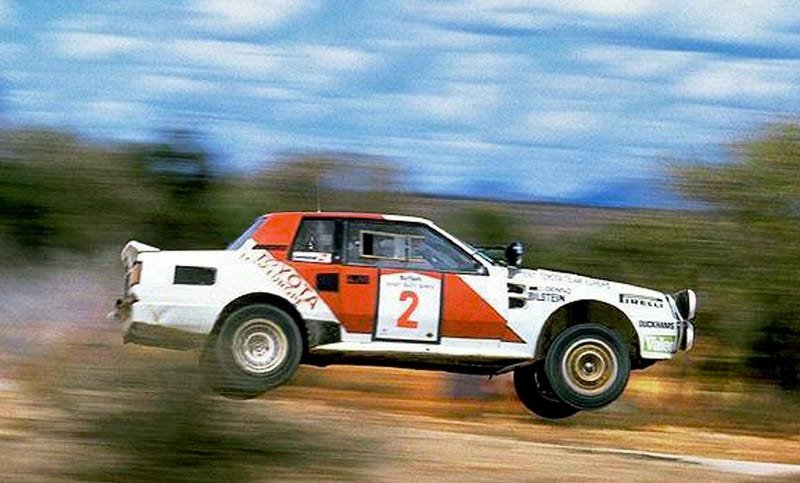
Group B has become famous for allowing the most unhinged, unrestricted, purpose-built race cars to ever grace a World Rally Championship stage. But in amongst the chaos was a kind of compromise car, not specialized enough to win, but too tough to lose. This is the Group B Toyota Celica.
I’ve actually gotten to see one of these things up close, a rare car even in the already rare world of Group B. I can’t remember how many Audi Quattros I’ve seen restored and rebuilt, featured in ads or YouTube homages. But the Toyota Celica Twin Cam Turbo (find its homologation form here) is a bit of a footnote to that major history, and it mostly stands out to mega nerds like myself. Even now, I don’t know if I love the Celica for what it is, or if I love it for the satisfaction that loving it brings me. I am different. I like the weird one, I say to myself, scrolling past pictures of its holy-grail 4T-GTEU engine, a two-liter turbo four making close to 400 horsepower with two spark plugs per cylinder.
The Toyota Celica Twin Cam Turbo (nicknamed both “The Whistling Pig” for its turbo engine and “The King of Africa” for reasons I’ll get to in a moment) was Toyota’s entry into the World Rally Championship for the 1980s. Like the Audi Quattro, it started out as a Group 4 car but we know it for competing in the much less restrictive Group B heyday of rallying, when cars grew so powerful that they were poaching technology from Formula 1, so popular that fans were literally standing in the road, parting like the Red Sea to let cars past.
The Celica wasn’t exactly a super specialized machine. It was based off of the normal rear-drive Toyota Celica of the time, the last of the rear-drive Celicas, still keeping one foot in the sturdy 1970s. Toyota didn’t go with all-wheel drive, like the Audi Quattro, so the Celica wasn’t as fast on loose, wet rallies. Toyota was also stuck with a kind of leaden front engine chassis and didn’t go mid-engine like the rear-drive Lancia 037, so the Celica wasn’t as fast on sticky, dry rallies.
Advertisement
So it was sort of left behind in most of the World Rally Championship calendar, not advanced enough to beat them.
Advertisement
But what the Celica did have was toughness. It was able to take on the rough desert and mud stretches of Africa, and there is was more advanced than the rest of its class of more old-school rally machines. Nissan’s similar 240RS (also rear-drive and fairly production-oriented) was carbureted, while the Toyota was turbocharged.
Six times the Celica won in Africa: three times in the Ivory Coast and three times in the legendary Safari.
So it was tougher than the other fast cars and faster than the other tough cars. It wasn’t fast enough to beat the best of the WRC in Europe, but in Africa, it was fast and tough enough. It is not the prettiest race car, nor is it the quickest, but it’s one of my absolute favorites.













